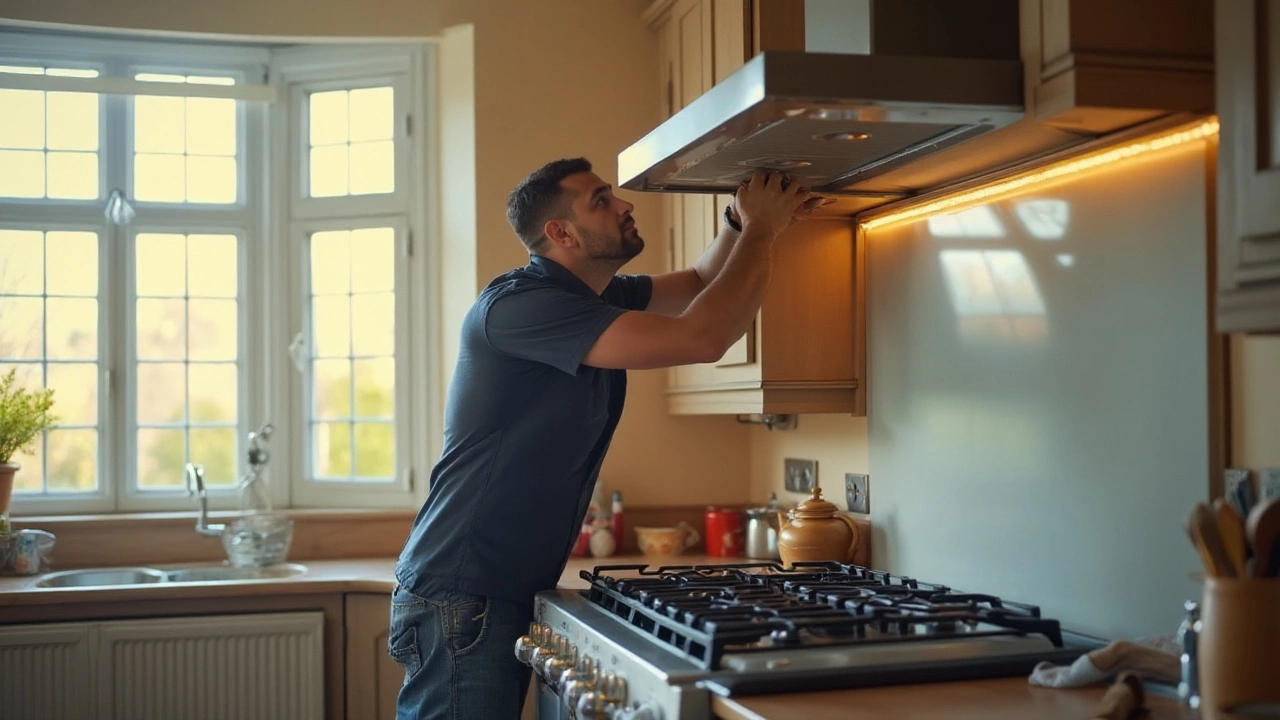How to Install Extractor Fans – A No‑Nonsense DIY Guide
If you’ve ever smelled stale air in the kitchen or watched steam cloud the bathroom mirror, you know a good extractor fan makes a big difference. The good news? You don’t need a professional for most installations. With the right tools, a bit of patience, and this step‑by‑step plan, you’ll have fresh air flowing in under an hour.
What You’ll Need Before You Start
Gather these basics so you’re not hunting for tools halfway through:
- Extractor fan unit (make sure it’s the right size for your vent opening)
- Drill with wood/metal bits
- Screwdriver set
- Wire stripper and screwdriver for electrical connections
- Silicone sealant or duct tape for airtight joins
- Safety gear – gloves and goggles
- Optional: Duct pipe if you need to route the fan to the outside
Check your local building codes. In most UK homes you can run a fan on a switched socket, but a dedicated circuit is safer for larger units. If you’re unsure about the wiring, pause and call an electrician.
Step‑by‑Step Installation Process
1. Pick the spot. For kitchens, mount the fan above the hob or cooking area. In bathrooms, place it near the shower or tub, at least 200 mm from the edge of the basin. Measure the opening on the ceiling or wall and mark where the fan will sit.
2. Cut the opening. Use a jigsaw or a hole‑saw that matches the fan’s diameter. Go slow, keep the blade steady, and wear goggles. A clean cut makes sealing easier later.
3. Run the duct. If the fan vents to the roof, thread a duct pipe through the opening you just made and secure it with clamps. Seal any gaps with silicone to keep moisture out. For a rear‑wall vent, the pipe will run along the studs to the outside wall.
4. Wire the fan. Turn off the power at the consumer unit. Strip the live (brown) and neutral (blue) wires from the fan and connect them to the corresponding wires in the switch box – usually using a standard colour‑coded connector. If the fan has a built‑in speed controller, follow the manufacturer’s wiring diagram. Tighten all screws, then tuck the wires neatly back into the box.
5. Mount the fan. Slide the unit into the opening, align the mounting brackets, and screw it into place. Make sure it’s level; an angled fan can be noisy and less efficient.
6. Test it out. Restore power and flip the switch. You should hear a steady hum and feel airflow at the vent. If the fan is silent, double‑check the wiring. If it rattles, tighten any loose screws and make sure the duct isn’t vibrating against the wall.
7. Clean up. Apply a bead of silicone around the perimeter of the fan where it meets the ceiling or wall. This stops drafts and moisture from sneaking behind the unit. Let the seal cure for the time the product recommends (usually 24 hours) before using the fan heavily.
That’s it – you’ve installed an extractor fan without calling a pro. Keep the fan clean by wiping the grill monthly; dust builds up and reduces performance. If you notice reduced airflow after a few weeks, check the duct for blockages – a quick vacuum can clear most issues.
Remember, safety comes first. If any part of the wiring feels confusing, or if your home has older fuse boxes, call a qualified electrician. A well‑installed fan not only clears steam and smells but also helps prevent mold and damp, protecting your home for years to come.






